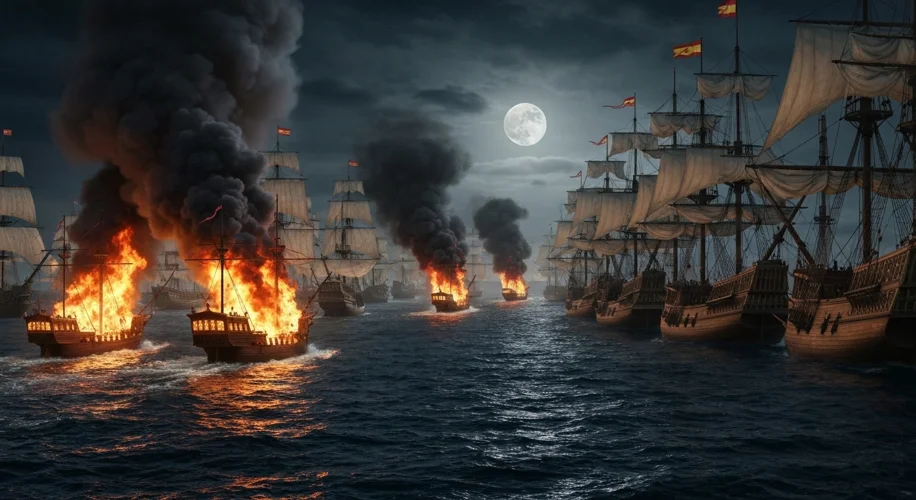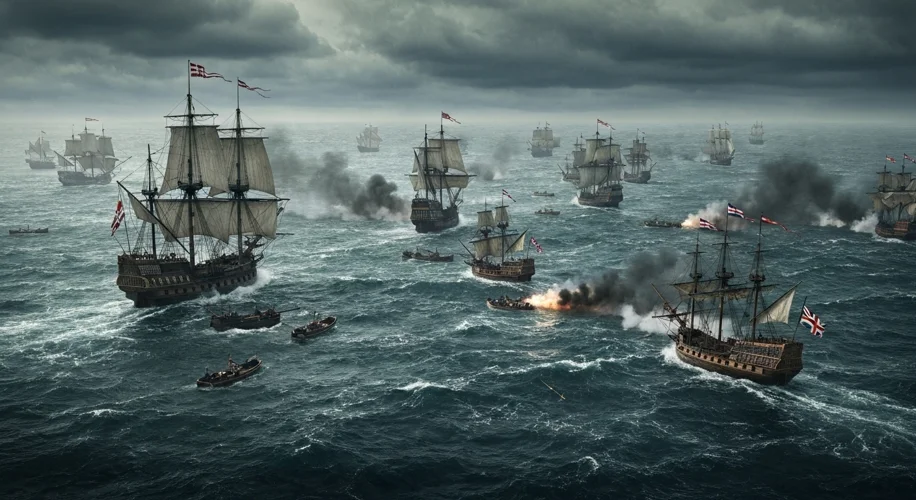The year is 1588. The air thrums with anticipation, a potent mix of religious fervor and national pride. King Philip II of Spain, the most powerful monarch in Christendom, has unleashed a colossal force upon the English Channel – the Spanish Armada. His mission: to depose the Protestant Queen Elizabeth I, restore Catholicism to England, and reclaim England’s place within the Spanish sphere of influence. This was no mere raid; it was an invasion, a meticulously planned behemoth of over 130 ships, 8,000 sailors, and 18,000 soldiers, intent on crushing England underfoot.
England, a nation that had recently thrown off the yoke of Catholic dominance, was a David facing Goliath. Elizabeth I, a shrewd and determined queen, rallied her people. The English fleet, though smaller and less experienced, was agile and manned by seasoned sailors, many of whom were privateers, accustomed to the cut-and-thrust of naval warfare. Figures like Sir Francis Drake, a daring pirate who had circumnavigated the globe, and Lord Howard of Effingham, the English Lord High Admiral, were at the helm, their crews ready to defend their island nation with a ferocity born of desperation and defiance.
The stage was set for a dramatic confrontation. The Armada, a crescent moon of formidable galleons and supply ships, sailed majestically up the Channel. The Spanish strategy was elegant in its conception: rendezvous with the Duke of Parma’s seasoned army waiting in the Netherlands, ferry them across the narrow strait, and land an overwhelming force on English soil. However, the Channel itself was a formidable adversary. Its unpredictable winds, treacherous currents, and shallow waters were a far cry from the open Atlantic the Armada was built to master.

The initial encounters were a dance of titans. The English ships, with their superior maneuverability and long-range cannons, harried the Spanish fleet, peppering them with shot from a distance. The Armada, designed for close-quarters boarding actions, found itself unable to close the gap effectively. The Spanish soldiers, packed tightly on their decks, were vulnerable targets, while the English sailors, using their lighter vessels like wasps, darted in and out of the enemy’s formation.
One of the most critical moments came off the coast of Calais. The Armada had anchored, waiting for word from Parma, whose troops were not yet ready. The English saw their chance. Under the cover of darkness, they launched eight fire ships – old vessels packed with combustible materials and set ablaze. The sight of these burning hulks drifting towards the anchored Armada sent a wave of panic through the Spanish ranks. Ships cut their anchor cables, scattering in disarray, breaking the disciplined crescent formation that had protected them.

This disarray played directly into the hands of the English. The ensuing Battle of Gravelines was a brutal affair. The English, with their cannons firing rapidly, inflicted heavy damage on the scattered Spanish ships. The Armada, unable to regroup or receive the promised reinforcements from Parma, was battered and beaten. A change in the wind, blowing from the south, offered the only escape route – north, around Scotland and Ireland, a perilous journey home.
The journey back was a catastrophe. Storms, starvation, and disease ravaged the surviving Spanish crews. Ships foundered on the rocky coasts of Scotland and Ireland, their crews meeting brutal ends. Of the original 130 ships, only about half limped back to Spanish ports, many in dire need of repair and with hollowed-out crews.
The failure of the Spanish Armada was a watershed moment. It was not just a military defeat; it was a profound psychological blow to Spain’s aura of invincibility and a significant boost to England’s burgeoning power. It signaled the rise of English naval supremacy and the beginning of the decline of Spanish dominance on the seas. The victory solidified Elizabeth I’s reign and fostered a sense of national identity and confidence in England. It allowed Protestantism to take root firmly in England, shaping its future religious and cultural landscape.

While often portrayed as a David-and-Goliath story, the Armada’s defeat was a complex interplay of factors: English naval skill, superior tactics, favorable weather, and the logistical failures of the Spanish. Philip II’s ambition, though grand, ultimately overreached the capabilities of his fleet and the realities of the English Channel. The ‘Invincible’ Armada, a symbol of Spain’s might, became a cautionary tale, a stark reminder that even the most powerful empires can be brought low by a combination of cunning, courage, and the unforgiving power of nature. It was a victory that echoed through the ages, shaping the destiny of nations and cementing England’s place on the world stage.

